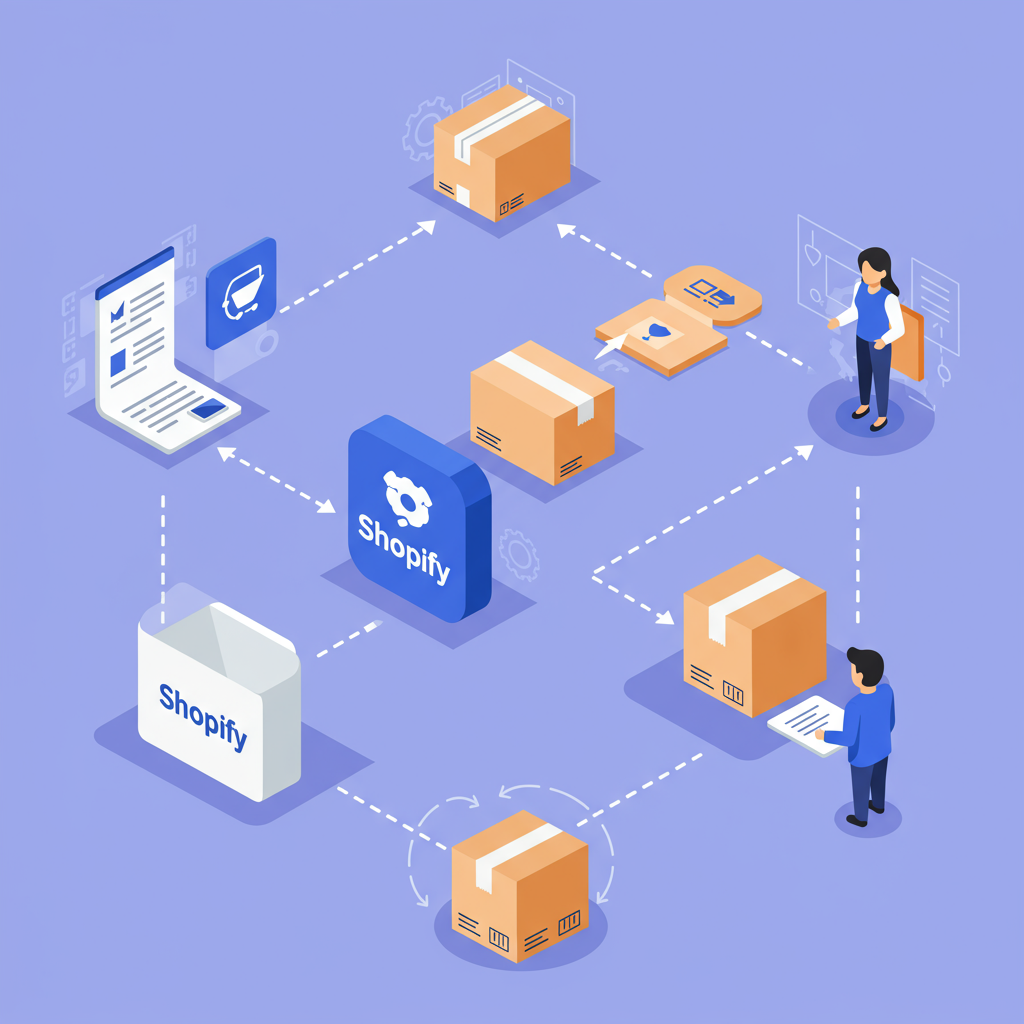Transforming your e-commerce operations from manual chaos to automated efficiency.
Hello fellow Shopify merchants! Today, I want to talk about something that can truly transform your e-commerce business: fulfillment automation.
As your store grows, manually handling every order, every shipping label, and every customer update becomes a monumental task. It’s not just time-consuming; it’s prone to errors.
That’s where automation steps in. It’s about setting up systems and tools to perform repetitive tasks automatically, freeing you up to focus on strategy, marketing, and product development.
I’ve seen firsthand how a well-implemented automation strategy can turn a chaotic fulfillment process into a smooth, efficient operation.
So, why should you, as a Shopify merchant, seriously consider automating your fulfillment? Let’s dive into the compelling reasons.
Firstly, time is money. Automating tasks like order tagging, shipping label generation, and tracking updates can save you hours, even days, each week.
Imagine those hours being reinvested into sourcing new products, optimizing your website, or engaging with your customers. That’s the power of automation.
Secondly, it drastically reduces human error. Manual data entry, copying tracking numbers, or misreading addresses are common pitfalls that automation virtually eliminates.
This leads to fewer mis-shipped orders, fewer customer complaints, and ultimately, a more professional and reliable brand image.
Thirdly, automation is key to scalability. When you’re processing 10 orders a day, manual fulfillment might be manageable. But what about 100, or 1000?
Automated systems don’t get tired or overwhelmed. They can handle spikes in demand effortlessly, ensuring your business can grow without hitting operational bottlenecks.
Fourthly, customer satisfaction skyrockets. Automated communication, like instant order confirmations and shipping updates, keeps your customers informed and happy.
They appreciate transparency and promptness, which builds trust and encourages repeat purchases. A smooth post-purchase experience is just as important as the pre-purchase one.
Finally, automation can lead to significant cost efficiencies. By reducing errors, optimizing shipping choices, and minimizing labor costs associated with manual tasks, your bottom line improves.
Now that we understand the “why,” let’s explore the key areas within fulfillment where you can implement automation.
**Order Processing:** This is often the first place to start. You can automate tagging orders based on product type, shipping method, or customer segment.
For example, an order for a “fragile item” could automatically be tagged, triggering a specific packing instruction for your team or 3PL.
**Inventory Management:** Keeping track of stock levels is critical. Automation can sync inventory across multiple sales channels, preventing overselling.
It can also trigger low-stock alerts, reorder reminders, or even automatically hide products when they go out of stock.
**Shipping:** This is perhaps the most impactful area. Automation can generate shipping labels, choose the best carrier based on rules (cost, speed), and automatically send tracking information to customers.
Many apps integrate directly with carriers, streamlining the entire label creation and manifest process.
**Customer Communication:** Beyond tracking, you can automate personalized emails for order confirmation, shipping updates, delivery notifications, and even post-delivery follow-ups.
This ensures your customers are always in the loop, reducing “where is my order?” inquiries.
**Returns Management:** While not fully automatable, you can automate the initial steps, like sending return instructions or generating return labels once a return request is approved.
So, how do you actually implement this? Shopify offers powerful native tools, and there’s a vast ecosystem of third-party apps.
**Shopify Flow** is your native automation powerhouse. It allows you to create custom workflows based on triggers, conditions, and actions.
For instance, “When an order is paid, AND the total is over $100, THEN add a ‘VIP’ tag AND send a personalized thank you email.” The possibilities are endless.
**Third-Party Apps** fill the gaps. Shipping apps like ShipStation or Shippo can automate label generation and rate comparison. Inventory apps like Stocky (Shopify’s own) or Katana can manage complex inventory needs.
For more comprehensive automation, consider integrating with a **Third-Party Logistics (3PL) provider**. They handle storage, packing, and shipping entirely, often with sophisticated automation built into their systems.
When choosing a 3PL, look for one that integrates seamlessly with Shopify, allowing for automated order syncing and tracking updates.
My advice for getting started is to first audit your current fulfillment process. Identify the most repetitive, time-consuming, or error-prone tasks.
These are your prime candidates for automation. Don’t try to automate everything at once; start with one or two key areas.
Choose the right tools that align with your budget and technical comfort level. Shopify Flow is a great starting point for many merchants.
Always test your automated workflows thoroughly before going live. A small mistake in a rule can have a big impact on many orders.
And once implemented, monitor your automations regularly. Business needs change, and your workflows should evolve with them.
Here are a few best practices I’ve learned: Keep your initial automations simple. Complex workflows can be harder to troubleshoot.
Regularly review your workflows to ensure they are still relevant and efficient. What worked last year might not be optimal today.
Train your team on how the automated systems work and, importantly, how to handle exceptions or manual overrides when necessary.
Always have a manual override or a fallback plan. Technology can fail, and you need to be prepared to step in.
While the initial setup might seem daunting, the long-term benefits of fulfillment automation far outweigh the effort.
It’s an investment in your business’s future, allowing you to scale, reduce stress, and provide an exceptional customer experience.
I truly believe that embracing automation is no longer a luxury but a necessity for competitive Shopify merchants.
It empowers you to work smarter, not harder, and ultimately achieve greater success.
What do you think about the insights shared in this article? I’d love to hear your thoughts and experiences with Shopify fulfillment automation!
So, take the leap. Start small, learn, and watch your Shopify store thrive with the power of automation.






